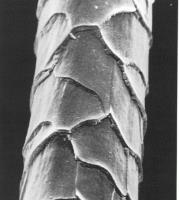 Add My Company
Add My Company
Sign In
Wool; The magic fibre
09/11/2017

What is so special about wool, that for centuries we have integrated it into our lives in such a big way?
Obtained mainly from sheep, wool can also be harvested from goats as Cashmere and Mohair and even from specially bred rabbits as Angora.
From our perspective we deal only with sheep wool and specifically a breed of sheep called Merino.
This is the technical bit
When wet with steam the fibres swell and the scales lift a little.
When two fibres touch each other in this state the scales interlock and in a way knit together. The term however is that they ?felt together?.
The term ?Felt? is not strictly a noun, it is a description of an action or process that creates a textile.
Merino wool, used predominantly by felt manufacturers, is known as the finest of wool and is grown in countries such as Australia, New Zealand & South Africa.
It is different to many other types of wool in that when its viewed under a microscope it looks very curly and springy. This is termed in the wool trade as crimp.
Normal, courser wool exhibits approx 1 or 2 curls, or crimps, along their length, whereas Merino wool can have as many as 100 crimps.
Combined with the scales, this extra crimp number allows the wool fibres to curl around each other like corkscrews when their scales become locked together; this forms an ever tighter fabric which in part leads to better characteristics of strength and performance in the final wool felt.
In Industrial Felt, the tighter the product becomes is directly related to the amount of steaming and processing the wool fibres are subjected to. As the product becomes tighter the fabric becomes firmer and it is this control that allows felt manufacturers to develop industrial felts that can meet a vast range of industrial requirements?..
For more information on Wool; The magic fibre talk to British Felt Company
Enquire Now
List your company on FindTheNeedle.

